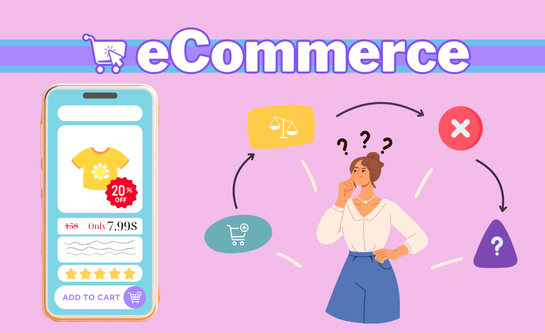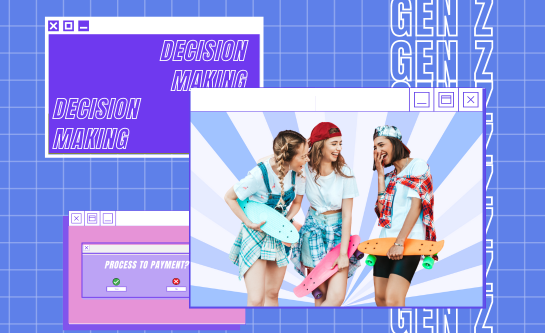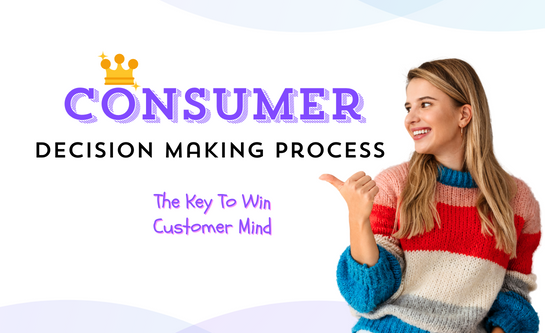B2B vs B2C: The Decision-Making Processes
 Jul 26th, 2024
Jul 26th, 2024
 834 views
6 MINS READ
834 views
6 MINS READ
Understanding how consumers make purchasing decisions is essential for the success of every business. Whether a company is engaged in business-to-business (B2B) or business-to-consumer (B2C) transactions, comprehending these decision-making processes can significantly influence marketing strategies and overall business outcomes. This article will explore the differences between B2B and B2C decision-making processes, offering valuable insights for businesses seeking to navigate and thrive in today’s competitive markets.
Consumer Decision Making Process in B2C
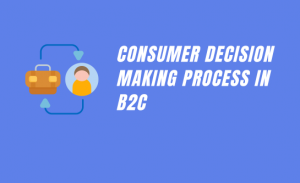 1. Need Recognition
1. Need Recognition
In the B2C realm, the decision-making journey typically starts with the consumer’s recognition of a need or desire for a product or service. This need can arise from various sources, including personal experiences, lifestyle changes, or external influences such as advertising, social media, or peer recommendations.
2. Information Search
Once the need is acknowledged, consumers embark on an information search phase to gather relevant data and insights. This often involves utilizing multiple channels such as online research, product reviews, comparison websites, social media platforms, and recommendations from friends or family.
3. Evaluation of Alternatives
Consumers meticulously assess and compare various alternatives available in the market. They consider factors such as price, quality, brand reputation, product features, customer reviews, and perceived value for money. This stage is critical as consumers seek to identify the option that best aligns with their preferences and requirements.
4. Purchase Decision
Following a thorough evaluation, consumers make their purchase decisions. Factors influencing this decision may include pricing strategies, promotional offers, discounts, availability, convenience of purchase channels (online or offline), and the overall shopping experience provided by the retailer or brand.
5. Post-Purchase Evaluation
After making a purchase, consumers evaluate their satisfaction with the product or service. Positive experiences may foster brand loyalty, word-of-mouth referrals, and repeat purchases. Conversely, negative experiences could lead to dissatisfaction, returns, or negative reviews, impacting the brand’s reputation and future sales.
Consumer Decision-Making Process in B2B
1. Problem Recognition
B2B decision-making processes typically commence when a business identifies a specific problem, challenge, or opportunity within its operations. This recognition could stem from various factors such as technological advancements, changes in market dynamics, operational inefficiencies, or strategic goals.
2. Information Gathering
Businesses engage in extensive research and information gathering to explore potential solutions to address the identified problem. This process often involves consulting industry experts, attending trade shows and conferences, conducting product demonstrations, and soliciting proposals from multiple vendors.
3. Evaluation of Options
Once relevant information is gathered, businesses evaluate various options based on predetermined criteria such as functionality, compatibility with existing systems, scalability, reliability, regulatory compliance, and potential return on investment (ROI). This evaluation is often conducted by cross-functional teams comprising decision-makers, influencers, and end-users.
4. Decision Making
The decision-making process in B2B transactions is characterized by its complexity and involvement of multiple stakeholders. Decision-makers weigh various factors, including cost considerations, long-term strategic implications, supplier reputation, contractual terms, and risk management strategies. Consensus-building and stakeholder alignment are crucial aspects of this process.
5. Post-Purchase Evaluation
After implementing the chosen solution, businesses evaluate its performance and impact on their operations. This assessment informs future purchasing decisions, vendor relationships, and ongoing partnerships. Businesses may seek feedback from internal stakeholders and external partners to identify areas for improvement and optimize their investments.
Key Differences Between B2B and B2C Decision-Making Processes
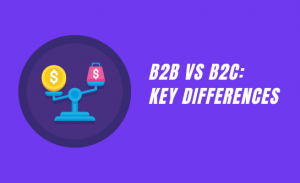 1. Complexity
1. Complexity
B2B decision-making processes tend to be more complex and multifaceted compared to B2C transactions, given the involvement of multiple stakeholders, longer sales cycles, and higher financial stakes.
2. Relationship Building
Building and nurturing long-term relationships is a cornerstone of B2B transactions, whereas B2C purchases are often more transactional in nature, with less emphasis on relationship-building beyond individual transactions.
3. Rationality vs. Emotion
B2B decisions are predominantly rational and driven by factors such as cost-effectiveness, performance, reliability, and risk mitigation. In contrast, B2C decisions may be influenced by emotional factors, brand perceptions, and aspirational attributes.
4. Purchase Volume
B2B transactions typically involve larger purchase volumes and higher monetary values compared to B2C purchases, reflecting the scale and complexity of business operations.
5. Decision Timeframe
B2B purchasing decisions often have longer decision-making timeframes due to the need for extensive research, internal approvals, negotiations, and stakeholder alignment. In contrast, B2C purchases tend to be more spontaneous and driven by immediate needs or consumer preferences.
6. Complexity and Stakeholder Involvement
Decision-making in B2B transactions is often complex and involves multiple stakeholders across different departments or functional areas within an organization. These stakeholders may include procurement officers, department heads, technical experts, finance professionals, and senior management. Each stakeholder may have distinct priorities, preferences, and decision criteria, contributing to a more intricate decision-making process.
In contrast, B2C transactions typically involve fewer decision-makers, often limited to individual consumers or households. While family members or friends may influence purchasing decisions to some extent, the decision-making process is generally more straightforward and less hierarchical compared to B2B transactions.
7. Relationship Building and Long-Term Partnerships
Building and nurturing long-term relationships is fundamental in B2B transactions. Businesses prioritize establishing trust, reliability, and mutual understanding with their B2B partners, as these relationships often extend beyond individual transactions. Successful B2B partnerships rely on effective communication, collaboration, and alignment of strategic objectives between buyer and seller.
While brand loyalty and customer retention are important in B2C markets, the nature of relationships tends to be more transactional. B2C businesses focus on providing exceptional customer experiences, personalized service, and value-added benefits to enhance customer satisfaction and encourage repeat purchases. However, the emphasis on long-term relationships is generally lower compared to B2B transactions.
8. Decision Criteria and Rationality vs. Emotion
Decision-making in B2B transactions is primarily driven by rational factors such as cost-effectiveness, efficiency, performance, and risk mitigation. Businesses conduct thorough analyses, evaluate product specifications, compare pricing models, and assess ROI potential before making purchasing decisions. While emotions may still play a role, they are typically subordinate to objective considerations.
In contrast, B2C purchasing decisions may be influenced by emotional factors such as brand perception, aesthetic appeal, social status, and lifestyle aspirations. Consumers may prioritize subjective preferences, personal tastes, and emotional connections with brands or products when making purchasing decisions. Marketing strategies often leverage emotional appeals, storytelling, and experiential elements to resonate with B2C consumers on an emotional level.
9. Purchase Volume and Financial Impact
B2B transactions often involve larger purchase volumes and higher monetary values compared to B2C purchases. Businesses may invest significant resources in procuring goods or services that are essential for their operations, infrastructure, or strategic objectives. Consequently, B2B purchasing decisions carry greater financial implications and risk considerations, necessitating diligent evaluation and decision-making processes.
While individual B2C transactions may have lower average order values compared to B2B purchases, B2C businesses cater to a broader consumer base, potentially resulting in higher overall sales volumes. However, the cumulative financial impact of individual consumer purchases may vary depending on the industry, product category, and pricing strategy employed by the business.
10. Decision Timeframe and Sales Cycle Length
B2B purchasing decisions often have longer decision timeframes and sales cycles due to the complexity of the procurement process, extensive research and evaluation requirements, and the need for stakeholder alignment. Sales cycles in B2B transactions can range from weeks to months, or even years for large-scale projects or enterprise solutions.
In contrast, B2C purchases tend to be more spontaneous and characterized by shorter decision timeframes. While certain high-involvement purchases or considered decisions may require more deliberation, many B2C transactions are driven by immediate needs, impulses, or seasonal trends. Consequently, B2C sales cycles are typically shorter compared to B2B transactions.
Conclusion
In conclusion, understanding the distinctions between B2B and B2C decision-making processes is crucial for businesses aiming to effectively engage and serve their target markets. By recognizing the unique dynamics, motivations, and challenges inherent in each context, businesses can tailor their marketing strategies, sales approaches, and customer engagement initiatives to maximize their impact and drive sustainable growth. Ultimately, success in today’s competitive business landscape requires a deep understanding of consumer behavior across diverse segments and contexts, coupled with agility and innovation in adapting to evolving market dynamics.
 Back to blog page
Back to blog page


























